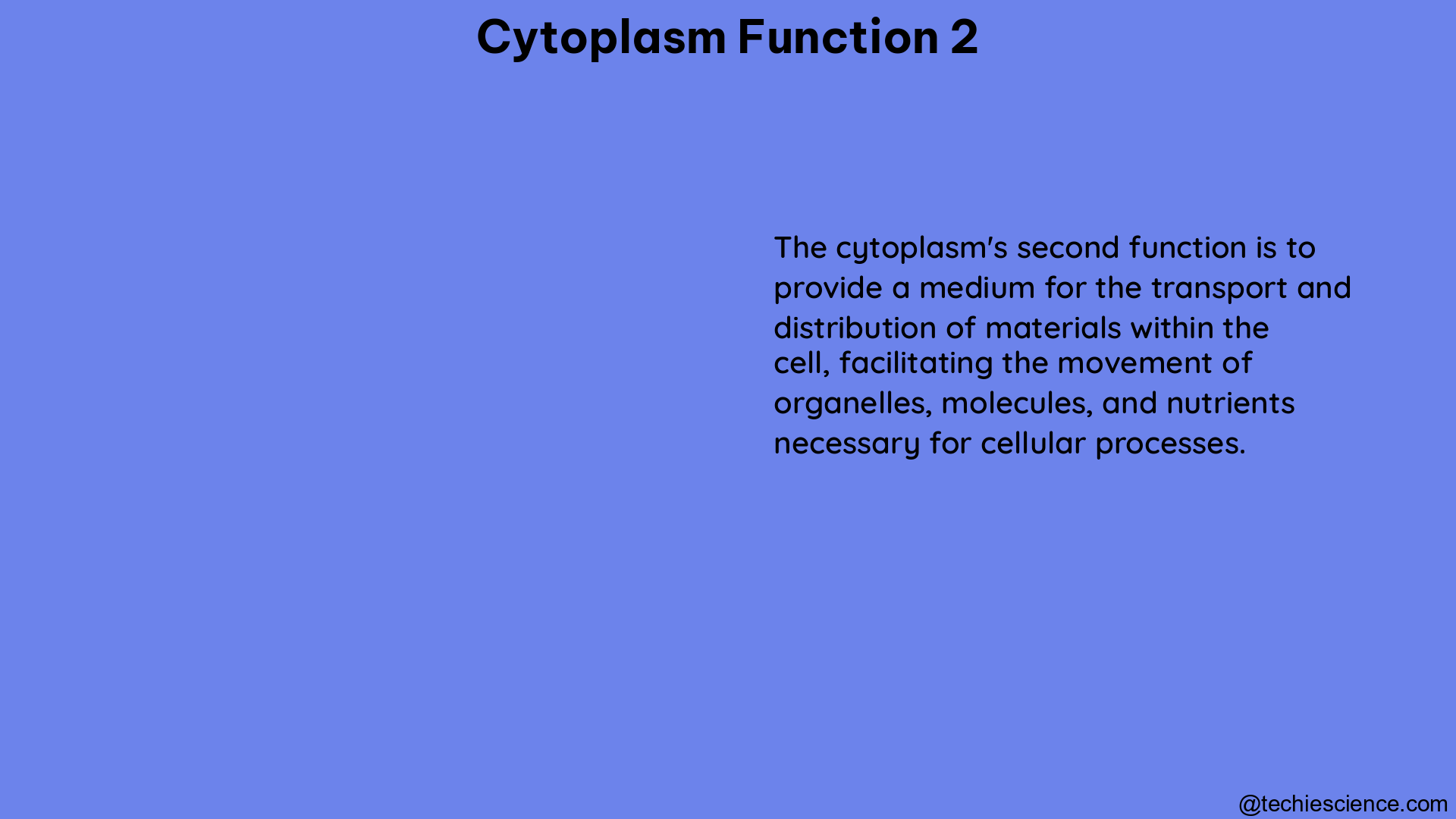The cytoplasm, the jelly-like substance that fills the interior of a cell, plays a crucial role in the fundamental processes that sustain life. Cytoplasm Function 2, specifically, focuses on the generation of energy through cellular respiration, a complex series of biochemical reactions that convert the chemical energy stored in food molecules into the universal energy currency, adenosine triphosphate (ATP).
The Energetic Landscape of the Cytoplasm
Cellular respiration is a multi-step process that takes place within the cytoplasm and the mitochondria, the powerhouses of the cell. This process involves the controlled breakdown of food molecules, such as glucose, to release the energy stored within their chemical bonds. The energy released is then used to generate ATP, the primary energy-carrying molecule in cells.
Glycolysis: The First Step in Energy Production
Glycolysis is the first step in the eukaryotic energy pathway, occurring in the cytoplasm. This process converts one molecule of glucose into two molecules of pyruvate, resulting in a net gain of two ATP and two NADH (nicotinamide adenine dinucleotide) molecules. The specific details of this process are as follows:
- Glucose is phosphorylated to glucose-6-phosphate, which is then converted to fructose-1,6-bisphosphate.
- Fructose-1,6-bisphosphate is cleaved into two three-carbon molecules, glyceraldehyde-3-phosphate.
- Glyceraldehyde-3-phosphate is then oxidized and phosphorylated, producing two molecules of ATP and two molecules of NADH.
- The two molecules of pyruvate are the end products of glycolysis.
The Citric Acid Cycle and Oxidative Phosphorylation
The pyruvate molecules produced during glycolysis are then transported into the mitochondria, where they undergo further oxidation through the citric acid cycle and oxidative phosphorylation. These processes are far more efficient than glycolysis, yielding much more energy per glucose molecule.
- In the citric acid cycle, the pyruvate molecules are converted into acetyl-CoA, which then enters a series of enzymatic reactions that release carbon dioxide and generate NADH and FADH2 (flavin adenine dinucleotide).
- Oxidative phosphorylation, which takes place in the electron transport chain located in the inner mitochondrial membrane, uses the energy stored in the NADH and FADH2 molecules to drive the synthesis of ATP.
The combined efficiency of the citric acid cycle and oxidative phosphorylation is remarkable, generating up to 15 times more ATP per glucose molecule than fermentation, the alternative energy-producing pathway.
Anomalous Diffusion in the Cytoplasm
The physical chemistry of the cytoplasm plays a crucial role in cellular function, including protein folding, enzyme catalysis, intracellular signaling, and the localization of molecules and organelles. One fascinating aspect of cytoplasmic dynamics is the concept of anomalous diffusion.
Anomalous diffusion, a concept borrowed from physics, describes the non-linear relationship between the mean-squared displacement (MSD) of a particle and time. In contrast to the linear relationship observed in normal diffusion, anomalous diffusion can exhibit subdiffusion (MSD < 1) or superdiffusion (MSD > 1), depending on the specific characteristics of the cytoplasmic environment.
Experimental data on diffusion in living cells have been challenging to reconcile due to the non-overlapping time and spatial scales of different measurement techniques. Additionally, the conclusions drawn from models and simulations are often difficult to test experimentally, highlighting the complexity of the cytoplasmic environment.
The Importance of Cytoplasm Function 2 in Cellular Processes

The energy generated through cellular respiration in the cytoplasm is essential for powering a wide range of cellular processes, including:
- Metabolism: The energy stored in ATP is used to drive the countless chemical reactions that sustain life, from the synthesis of new biomolecules to the breakdown of waste products.
- Cellular Construction: The energy from ATP is used to construct new cellular components, such as proteins, lipids, and nucleic acids, allowing the cell to grow, divide, and maintain its structural integrity.
- Intracellular Transport: The movement of molecules and organelles within the cell, facilitated by motor proteins, requires the energy provided by ATP hydrolysis.
- Signaling and Communication: The cytoplasm serves as a medium for the transmission of chemical signals, which are essential for coordinating cellular activities and responding to changes in the extracellular environment.
- Protein Folding and Enzyme Catalysis: The physical chemistry of the cytoplasm, including its viscosity and crowding, plays a crucial role in the proper folding of proteins and the efficient catalysis of enzymatic reactions.
- Nanoparticle and Therapeutic Targeting: Understanding the diffusion and localization of nanoparticles and therapeutic agents within the cytoplasm is crucial for the development of effective drug delivery systems and targeted therapies.
Conclusion
Cytoplasm Function 2, the generation of energy through cellular respiration, is a fundamental process that underpins the vast majority of cellular activities. By delving into the intricate details of glycolysis, the citric acid cycle, and oxidative phosphorylation, as well as the physical chemistry of the cytoplasm, we gain a deeper understanding of the energetic landscape that sustains life at the cellular level. This knowledge has far-reaching implications, from the development of new therapeutic strategies to the advancement of our understanding of the complex and dynamic nature of the living cell.
References:
- Alberts, B., Johnson, A., Lewis, J., Raff, M., Roberts, K., & Walter, P. (2002). Molecular Biology of the Cell. Garland Science.
- Berg, J. M., Tymoczko, J. L., & Stryer, L. (2002). Biochemistry. W.H. Freeman.
- Milo, R., & Phillips, R. (2015). Cell Biology by the Numbers. Garland Science.
- Saxton, M. J. (1994). Anomalous diffusion due to obstacles: a Monte Carlo study. Biophysical journal, 66(2), 394-401.
- Weiss, M., Elsner, M., Kartberg, F., & Nilsson, T. (2004). Anomalous subdiffusion is a measure for cytoplasmic crowding in living cells. Biophysical journal, 87(5), 3518-3524.

The lambdageeks.com Core SME Team is a group of experienced subject matter experts from diverse scientific and technical fields including Physics, Chemistry, Technology,Electronics & Electrical Engineering, Automotive, Mechanical Engineering. Our team collaborates to create high-quality, well-researched articles on a wide range of science and technology topics for the lambdageeks.com website.
All Our Senior SME are having more than 7 Years of experience in the respective fields . They are either Working Industry Professionals or assocaited With different Universities. Refer Our Authors Page to get to know About our Core SMEs.